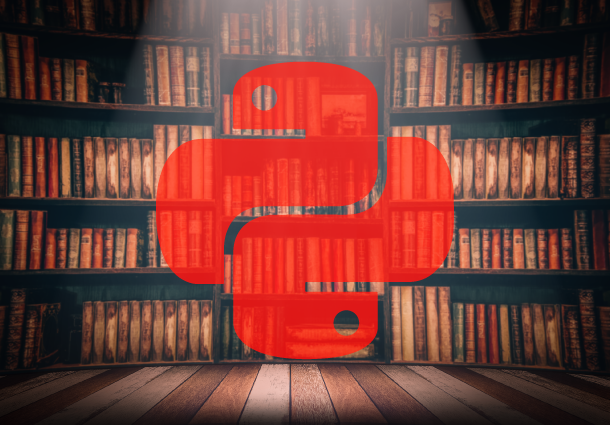Transforming the Financial Sector with Python’s Paradigm
In the finance world, technology is now crucial, especially in the fintech industry. Financial industries such as banks, investment firms, and insurance sectors have become heavily dependent on new software and technology to avoid risks. That’s where Python comes into the picture! Python is the most popular programming and automation language and plays a vital role in the fintech industry. With its intuitive syntax and rich libraries which are crafted for data analysis, visualization, and machine learning.

In this fast-developed world, where decision-making is pivotal, python allows developers to extract valuable insights from huge data sets efficiently. Furthermore, python for finance has an adaptability that allows developers to create advanced models for tasks like optimizing portfolios, managing risk, and analyzing the latest trends. Python’s indispensability in the fintech industry is undeniable, helping companies maintain a competitive edge in the ever-evolving market landscape.
In our blog, we delve into Python’s profound impact on the fintech industry. Python’s versatility empowers users to adapt swiftly to market trends and refine strategies in Python financial modeling. Join us as we explore how Python revolutionizes finance, offering dynamic tools for navigating the tech landscape of the industry.
Discovering the Fundamentals of Versatile Language; Python’s Pinnacle as a Programming Language
Python, a programming language, has become a significant foundation in the realm of technology. Python is used by a vast range of developers globally, because of its simplicity, reliability, and vast ecosystem of libraries and frameworks. Its intuitive syntax and robust ecosystem make it accessible to a diverse range of developers, from beginners to seasoned experts. Its widespread use is due to its capability to simplify development tasks and enable quick prototyping.

It can also be used for a variety of development tasks, which include the creation of customer software, and web applications, performing mathematical operations, artificial intelligence, and machine learning. The rich sets of libraries and frameworks available in Python enable developers to efficiently tackle various tasks and challenges. Python is being used widely, that’s why it is considered to be the fastest programming language.
In the fintech industry, Python plays a significant role in offering various capabilities that drive innovation and more advantages. With Python for finance, developers can handle large data sets, visualize complex financial data, and optimize and manage portfolios. Additionally, Python seamlessly integrates with various financial tools and platforms, boosting its effectiveness in the finance sector. As the fintech industry continues to evolve at a rapid pace, Python remains a vital tool for driving transformative change and shaping the future of finance.
Python for Finance; The Premier Choice in the Realm of the Fintech Industry
With the rise of technology, Python has become a top priority in various industries. When it comes to the Fintech industry, it serves as a cornerstone for diverse applications and solutions. From data analysis and algorithmic trading to risk management and financial modeling, Python for financial analysis has versatility and efficiency making it indispensable in driving innovation and progress within the fintech sector.

In financial data analysis and visualization, python stands out as the best choice. It consists of libraries like NumPy, and Pandas, which makes it simple for financial experts to analyze and visualize massive sets of data. On the other hand, Panda is also a powerful library that provides go-to-go data structure, and data handling tools for handling and manipulating huge volumes of data. It also allows for easy loading and cleaning of data sets. NumPy is a numerical computing that is used for handling financial data sets that are complex. Furthermore, NumPy also allows operations like addition, and multiplication on whole arrays at once. This makes calculation work faster and more efficient compared to the old one.
Also, python supports algorithm trading in the financial industry. Algorithm trading is a practice of executing trades using an automated system, which helps in analyzing market trends, making informed decisions, and working much faster than homo sapiens. Additionally, Python enables the creation, testing, and automation of trading methods, by utilizing a model like sci-kit-learn for machine learning and data analysis. Also, Python can be promoted to design systems that automatically execute transactions followed by pre-established rules or models, and conduct backtesting of trading strategies. One such tool is PyAlgoTrade, a backtesting framework, that allows for integrating data sources which also includes real-time market data, which can be used to test the trading strategies.
One of the major reasons to use Python for financial modeling is to create models that forecast financial attainment based on historical performance. Furthermore, Python is also used to build risk management systems in financial firms, which are associated with financial instruments and portfolios. Python is a game-changer in the world of finance. Its versatility, automation capabilities, and integration potential make it an indispensable tool for finance professionals looking to revolutionize their strategies.
The superiority of Python’s Exalted Role in the Finance Industry
Python’s formation was intended to provide simple coding procedures and reduce the learning curves for all non-programmers. Python’s syntax is easy to grasp, uncomplicated, and readable, making the code easy to comprehend. Furthermore, this programming language is compatible and extensible, and easy to operate in a variety of systems such as Windows, macOS, etc.
Additionally, Python provides a vast range of pre-built modules and libraries that not only intend to save time but also effort when constructing a large-scale application. Examples are NumPy and TensorFlow. Python also offers a strong automated testing framework and debugging tools that help developers easily identify and resolve code errors. This streamlined development process ensures smoother project execution and mitigates the risk of errors or setbacks.
In addition, Python is versatile, supporting various programming criteria like procedural, functional, object-oriented, and aspect-oriented programming. This flexibility allows developers to choose the coding style that suits their project needs best. Whether they prefer a step-by-step approach, focus on functions, or organize code around objects, Python accommodates different preferences. This adaptability empowers developers to write code in a way that maximizes efficiency and readability for their specific project requirements and needs. Whether working on a small or a large-scale application, Python’s compatibility with multiple programming paradigms ensures developers can work comfortably and effectively, ultimately leading to more robust and maintainable software solutions.
Python is an interpreted programming language that allows automated testing framework and debugging tools, which enables developers to quickly grasp the error and fix it to ensure flawless and efficient development processes. These mixed features make Python for finance an ultimate choice for any project, which offers versatility, and reliability when compared to other programming languages.
Formulating and Testing Algorithmic Strategies for Market Success with Python-Powered Trading
Algorithm Trading ascendancy the power of computational analysis to intercept huge amounts of real-time data. By utilizing complex algorithms, traders can automate the process of executing trades, allowing them to make quicker decision-making and more efficient market participation. With the adaptation of Python in the financial industry, businesses can automate their trading processes by designing and integrating algorithmic trading strategies and systems. By leveraging Python’s capabilities, financial institutions can also implement algorithms that drive profitability and mitigate risks effectively. This integration of Python into algorithmic trading systems marks a significant advancement in the financial industry, revolutionizing the way trades are executed and strategies are implemented.
Moreover, traders can utilize Python for financial analysis, accessing a plethora of financial information. They can get old -historical price details and new updates about the market. This information can then be put into their trading computers. This data can then be processed, analyzed, and visualized to gain insights into market trends, volatility, and correlations, empowering traders to develop strategies that exploit profitable opportunities while minimizing risk exposure.
Besides, when it comes to developing and backtesting trading algorithms, Python is used which is paramount in modern finance. Its versatility and extensive libraries make it an ideal choice for traders and developers alike. QuantLib and Backtrader stand out as outstanding Python libraries for implementing and backtesting trading strategies.
QuantLib provides a comprehensive suite of quantitative finance functions, which include pricing models, risk management tools, and financial instrument valuation. On the other hand, Backtrader is a versatile backtesting framework that simplifies strategy development and evaluation, which allows traders to analyze historical data and simulate trading scenarios seamlessly.
Python’s Fintech Finale; A Culmination with Pattem Digital
In conclusion, Python stands as a pivotal force in the fintech industry, driving innovation, efficiency, and competitiveness among financial institutions and traders alike. Its versatility and extensive libraries empower users to navigate complex financial landscapes, extract valuable insights from data, and automate critical processes with ease.
Python’s intuitive syntax, robust ecosystem, and compatibility with multiple programming paradigms make it the premier choice for financial modeling, risk management, algorithmic trading, and beyond. By leveraging Python’s capabilities, businesses can stay agile and responsive to market trends, while developers can streamline development processes and deliver impactful solutions that drive success in the ever-evolving fintech ecosystem. As the fintech landscape continues to evolve, Python remains a vital tool for driving innovation, efficiency, and competitiveness in the financial sector. Partnering with Pattem Digital – a python development company, further enhances this journey, as our expertise in leveraging Python and other cutting-edge technologies ensures the development of scalable, robust, and user-friendly fintech solutions that drive business growth and success.





